Table Of Content
- IoT Connectivity and User Adoption
- Matter Smart Home—Matter Protocol
- Matter Certified Products
- Lower Costs and Improved IoT Development
- IoT Application Layer
- IP Protocols
- Matter Controller and Border Routers
- Matter Bridges
- IoT Smart Home Security
- Integrating Mobile Access Control with Aliro
- Matter Smart Home Devices
- Matter Smart Home Implementation
- Benefits of Matter Smart Home Ecosystems
- Krasamo’s IoT Developer Services
IoT Connectivity and User Adoption
The IoT Smart Home market currently offers numerous products with many platforms, protocols, and applications, making Smart Home setup and maintenance cumbersome and time-consuming. Therefore, users have been slow in adopting IoT Smart Home products due to decreased satisfaction or frustration from the complexities of incompatible protocols, specifications, and stacks. A better user experience (UX) with more flexibility and seamless connectivity is required for massive household adoption and greater customer satisfaction.
Matter Smart Home—Matter Protocol
Matter is a revolutionary open-source connectivity standard that unifies the Internet of Things (IoT) ecosystem, enabling secure and seamless communication among a wide range of smart home devices. Developed by the Connectivity Standards Alliance (CSA), a collaborative platform that advocates for global open standards for the IoT through public/private engagement, Matter is transforming the smart home industry.
The Matter Working Group, responsible for developing and delivering this universal IP-based smart home standard, has taken an innovative approach to create both an open standard and an open-source implementation in the form of a Software Development Kit (SDK). This dual approach accelerates growth and adoption by providing a common, interoperable foundation for all manufacturers building Matter-compatible products.
By leveraging the power of open standards and open-source technology, Matter ensures that devices from different brands can securely connect and interact with each other, regardless of the underlying platform or ecosystem. This interoperability eliminates the complexity and frustration often associated with managing multiple smart home devices and protocols, ultimately leading to increased consumer satisfaction and faster adoption of IoT technologies.
As an IP-based protocol, Matter supports various network transports, including Wi-Fi, Thread, Ethernet, and Bluetooth for device commissioning. This flexibility allows manufacturers to choose the most suitable networking technology for their products while maintaining compatibility with the Matter ecosystem.
With its strong focus on security, Matter incorporates robust measures such as secure device onboarding, over-the-air updates, and authenticated device interactions. By adhering to the principle of security by design, Matter ensures that smart home devices are protected against potential security risks and vulnerabilities.
The introduction of Matter marks a significant milestone in the evolution of the IoT landscape, paving the way for a more connected, secure, and user-friendly smart home experience. As more manufacturers adopt this open standard, consumers can look forward to a future where smart home devices work together seamlessly, enabling new possibilities for convenience, energy efficiency, and home automation.
New products for Matter Smart Home are being built to provide seamless connectivity and improve reliability, security, and interoperability in an open ecosystem without locking consumers.
Matter Certified Products
IoT products certified with Matter carry an approval seal, which is essential for effectively marketing these products. This certification ensures that consumers can confidently choose products that integrate seamlessly into their IoT ecosystems and work with platforms like Apple’s Siri, Google’s Assistant, and Amazon’s Alexa. Certification guarantees compatibility and interoperability and affirms adherence to rigorous security and operational standards.
Certification and Testing
Seventy percent of our global member companies across the IoT value chain participate actively in the Connectivity Standards Alliance’s certification and testing programs. These programs are pivotal in validating the compliance and interoperability of products under development. The Certification and Testing team leads Working Group Test Events (TEs) for emerging specifications and supports Specification Validation Events (SVEs) and Script Validation Events (ScVEs).
In 2023, the Certification Team facilitated two specification updates, launching the Matter 1.1 and Matter 1.2 certification programs. These updates included rigorous testing phases, demonstrating our commitment to maintaining and elevating the standard of interoperability and security within the IoT space. Regular Plugfest sessions across the US, EU, and China are held to enable real-time interoperability checks with devices from various members, ensuring a wide-reaching and robust certification process.
Achievements and Impact
According to the CSA’s 2023 annual report, the dedication to comprehensive certification processes has led to significant milestones, surpassing 7000 Certified Products by November 2023, with over 3000 being Matter Certifications. This achievement underscores the widespread adoption and trust in the Matter standard.
Certification Process Overview
The certification process involves several critical steps:
- Become a Member: Join the Connectivity Standards Alliance to engage in certification activities.
- Testing and Validation: Participate in Test Events (TEs) and Specification Validation Events (SVEs) to ensure products meet all required standards.
- Apply for Certification: Submit products for certification, which includes compliance checks and interoperability testing.
Products that pass these stringent tests receive a Matter certification, a testament to their quality and compatibility within the IoT ecosystem. This rigorous approach to certification fosters a trusted environment for manufacturers and consumers alike, promoting a seamless and secure user experience across a myriad of devices and platforms.
Lower Costs and Improved IoT Development
IoT developers currently cope with building products that integrate with each ecosystem interface, where many protocols and specifications create longer development time and inefficiencies when deploying IoT products. However, building products that work in the Matter Smart Home will improve IoT development speed and reduce costs by using open-source code with exceptional specifications.
Adapting your current IoT products to work with this technology will provide reliability to your customers, increase the speed of your operations, and reduce the time to market. IoT developers will focus more on innovating, creating differentiated IoT products, connecting with their customers, and saving time with many protocol implementations.
IoT Application Layer
IoT devices connect using IoT protocols such as Wi-Fi or Thread and then implement the application layer to deliver interoperability and connect across multiple compatible networks. Matter is a single application layer, a common language, that can run on IoT devices on any networking technology, leaving the manufacturer the flexibility to choose their networking technology. Matter is built over Internet Protocol (IP) networking, thus supporting various network transports.
IP Protocols
Matter will run on top of Wi-Fi (for high bandwidth and power) and Thread (low power and low bandwidth) network layers, as well as Bluetooth for device set-up (commissioning). It is extensible to cloud, with all specifications built on top of existing proven standards. In addition, Matter is suitable for running over IP-based protocols such as cellular and broadband.
Matter Controller and Border Routers
Matter Smart Home controllers can be flexibly built into any device, hub or panel, mobile operating system, mobile app, and interface to administer and control the network and devices, simplifying the user experience. The Matter Controller or device vendor app can automatically set up any device without installing a new one. IoT devices can continue using the manufacturer’s mobile app for specific features and simultaneously connect with multiple platforms (multi-admin feature), mobile apps, and brand ecosystems.
The controller app communicates directly with new devices via BLE as commissioner for onboarding into Wi-Fi or Ethernet networks and provides secure credentials. The Matter protocol also supports Thread as a network layer to onboard and link Thread devices using a Thread Border Router. Thread routers can be built into other Smart Home devices.
Devices onboarded in the network can interact with other devices using the Matter application protocol. The Matter protocol provides responsive local communication and allows IP devices to connect to their applications and ecosystems through cloud connections with proper remote access.
Matter Bridges
Although building native Matter devices is ideal, IoT devices using other technologies can also communicate to the Matter Smart Home network using Matter-compliant bridges that work with other protocols and allow interaction with all other devices. In addition, many existing IoT Smart Home hubs will become Matter-certified bridges that will control devices from the WI-FI network.
Matter bridges can be built into other devices to reduce the number of physical devices in the Matter Smart Home. Matter protocol adopted a data model, interaction model, and device definitions from Dotdot by Zigbee.
IoT Smart Home Security
Adopting IoT Smart Home products presents two main challenges: the complexity of device configuration and personal security and privacy risks. To address these, Matter Smart Home standards feature a comprehensive security architecture based on Zero Trust and secure-by-design principles. This architecture includes rigorous testing and authentication measures for every device and over-the-air updates to ensure continuous security enhancements.
Matter standards simplify onboarding IoT devices with built-in components, eliminating the need for manual network password entries or additional security layers, thus maintaining robust security. The protocol utilizes advanced cryptographic algorithms, including NIST P-256 and AES-CCM-128, to safeguard communications and device functionalities.
The Matter Smart Home project is advancing distributed ledger technologies to verify IoT devices, vendor IDs, and firmware updates through cryptographic tests. This ensures devices comply with Matter protocol certifications, enhancing device security and integrity.
Since 2022, the Product Security Working Group has been harmonizing global IoT cybersecurity standards. In 2023, they introduced an IoT Device Security Specification and accompanying Assessment Guidance based on ETSI EN 303 645 standards and NIST IR 8425.
This culminated in test events to set specifications for new products launching in 2024 with a Verified Mark and a scannable QR code, which will provide transparency about device security. Learn more about the new labeling program, the U.S. Cyber Trust Mark.
Benefits of Harmonized Security Standards:
- Transparency for Consumers: Allows easy identification of products meeting high-security standards, enhancing trust.
- Recognition for Manufacturers: Helps manufacturers distinguish their products in the market through their commitment to stringent security standards.
- Regulatory Compliance: Simplifies adherence to international IoT security regulations, facilitating broader compliance.
As 2024 approaches, the Product Security Working Group is set to launch a certification program that will expand the number of products carrying trusted security marks. Continued development and testing of distributed ledger technologies underscore Matter’s commitment to robust IoT device security, guarding against evolving cyber threats and ensuring compliance with stringent certifications.
Benefits of Harmonized Security Standards
This unified approach to security certification offers significant advantages:
- Transparency for Consumers: Consumers can easily identify and choose products that meet rigorous security standards, enhancing trust and confidence in their IoT devices.
- Recognition for Manufacturers: Manufacturers receive recognition for their commitment to high-security standards, helping them stand out in a crowded market.
- Regulatory Compliance: Harmonizing standards simplifies compliance for manufacturers and regulators, promoting broad adherence to international IoT security regulations.
Integrating Mobile Access Control with Aliro
Alongside the advancements brought by the Matter protocol, the Aliro protocol emerges as a complementary technology focusing on revolutionizing access control. Developed by the Connectivity Standards Alliance, Aliro standardizes how mobile phones and wearable devices are secure digital keys for doors and other entry points.
By ensuring a consistent and interoperable experience across different hardware and systems, Aliro enhances the flexibility and security of smart home environments. This integration supports the Matter ecosystem by enabling seamless and secure mobile access, thus broadening the capabilities of smart home solutions. Both protocols provide a comprehensive, secure, and user-friendly smart home experience.
Matter Smart Home Devices
The development of Matter Smart Home devices in the Internet of Things (IoT) ecosystem aims to provide a superior user experience with products that work seamlessly across platforms and communicate effortlessly with other consumer devices. Many consumer devices in the market are integrated with Matter specifications–Matter 1.0, Matter 1.2, and Matter 1.3 versions.
However, additional Matter protocol specifications are under development to accommodate new devices and commercial product applications, expanding the potential of the Matter ecosystem.
For more comprehensive insights into the development processes and how Matter enhances connected experiences across diverse IoT devices, visit our page about Matter Smart Home Development. This resource offers in-depth discussions on the standards and technological frameworks that facilitate seamless device integration and user-friendly operations within the Matter ecosystem.
Evolution of Matter Smart Home Products
Matter supports various device categories to create a comprehensive and interconnected smart home ecosystem. With each new Matter release, the list of supported device types continues growing, offering consumers more seamless integration and control options.
Matter 1.0 laid the foundation for the Matter ecosystem, supporting a wide range of device types, including:
- HVAC Controls – AC units and thermostats
- Lighting and Electrical – luminaires, bulbs, plugs, switches, and controls
- Safety and Security – security systems, detectors, and sensors
- Blinds/Shades
- Access Control – door locks and garage doors
- Infrastructure Devices – controllers, access points, and bridges
Matter 1.1, released in May 2023, focused on enhancements for developers and devices. While no new device categories were introduced, this release brought improvements to the developer experience, testing and certification processes, and support for battery-powered devices.
Matter 1.2, introduced in October 2023, brought support for these additional device types:
- Refrigerators – basic temperature control and monitoring (also applicable to deep freezers, wine fridges, etc.)
- Room Air Conditioners – standalone units with temperature and fan mode control
- Dishwashers – remote start, progress notifications, and alarm support for operational errors
- Laundry Washers – progress notifications and cycle completion alerts
- Robotic Vacuums – remote start, progress notifications, cleaning modes, and status reporting
- Smoke & Carbon Monoxide Alarms – notifications, alarm signaling, battery status, and self-testing capabilities
- Air Quality Sensors – PM2.5, PM10, CO2, NO2, VOC, CO, Ozone, Radon, and Formaldehyde sensing and reporting
- Air Purifiers – sensing information, fan functionality, and consumable resource monitoring (e.g., filter status)
- Fans – enhanced controls for movement, modes, airflow direction, and speed
Matter 1.3, released in May 2024, further expanded the supported device types to include:
- Microwave Ovens – control cooking time, power level, mode, and receive notifications
- Ovens – control temperature, mode, and compartments for various oven configurations
- Cooktops – remote access and control of individual cooktop elements
- Extractor Hoods (Cooker Hoods, Vent Hoods) – control light and fan settings and filter status
- Laundry Dryers – set mode, temperature, and receive end-of-cycle notifications
Additionally, Matter 1.3 introduced support for water and energy management devices, such as:
- Electric Vehicle Charging Equipment (EVSE) – control charging rates and schedules
- Leak and Freeze Detectors, Rain Sensors, and Controllable Water Valves
With each new Matter protocol version, the categories of Matter Smart Home Products continue to expand, enabling a more comprehensive and interconnected smart home ecosystem. Learn more about certifiable device types up to Matter 1.3.
Matter Smart Home Implementation
The Matter protocol provides reference implementations of specs tested and validated in practice by Matter’s community of contributors, such as supporting multiple transports (WI-FI and Thread), testing, and security of interactions. Those implementations benefit IoT developers by speeding up their work and helping create high-quality code.
Matter Smart Home’s implementation-first approach focuses on specs that work in real-world use cases. You can check commits in the GitHub repository and build compilations that support Thread, Wi-Fi, and Bluetooth (BLE).
Matter is building tools for automation, testability, and integration with IoT developers’ testing processes for building Matter certified products.
Krasamo’s IoT developers can help clients adequately validate their product test cases and implementations to meet the Matter Smart Home standard requirements for upgrading their IoT products and bringing them to market.
Benefits of Matter Smart Home Ecosystems
- Developer-friendly to simplify IoT development.
- Increases compatibility and interoperability with other Matter-certified products
- Lowers the barriers to consumers with an easy-to-use, out-of-the-box experience
- Deployment in other platforms and ecosystems
- Implementation on devices with low memory requirements and compute power
- Provides strong security within the IoT architecture
- Reliable and cohesive solution built on top of proven technologies
- Simplicity through one protocol stack and one SDK to interact with many ecosystems
- Enables new device types in the IoT Smart Home
Krasamo’s IoT Developer Services
- Development of firmware applications
- IoT app development—user experience (UX) design
- IoT architecture design
- IoT open-source development agnostic mindset
- Compliance with Matter specifications and certification process
- IoT data pipelines and analytics
- Generative AI applications
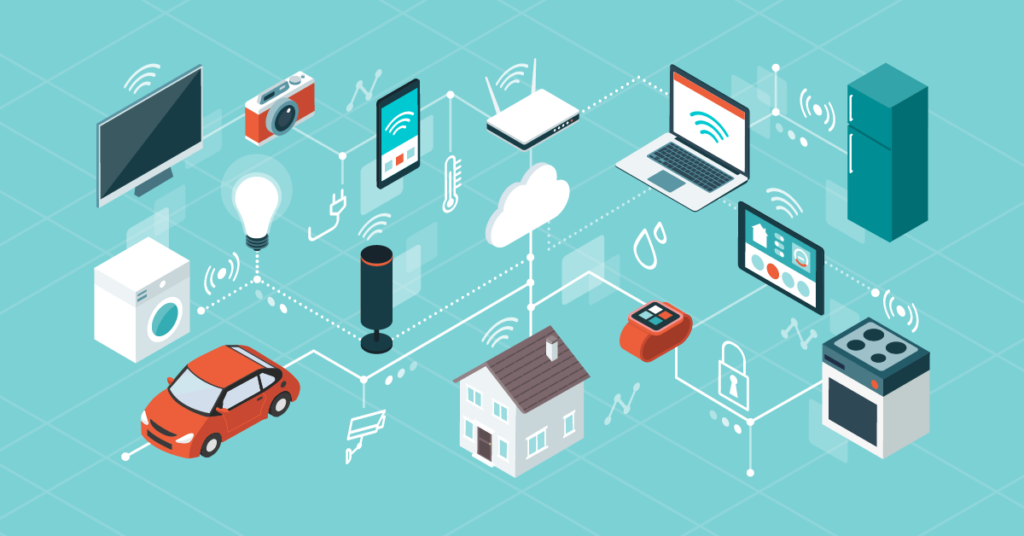





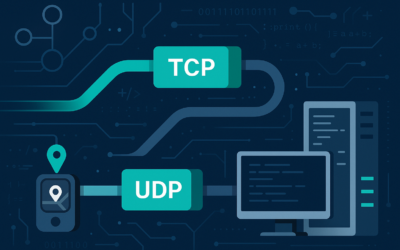
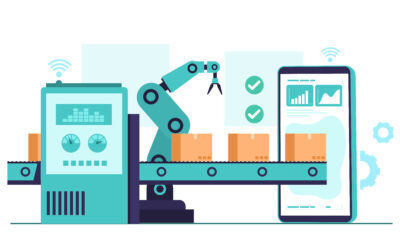

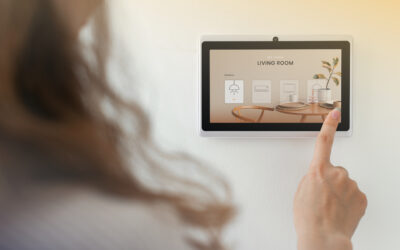
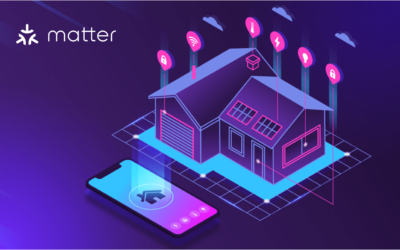
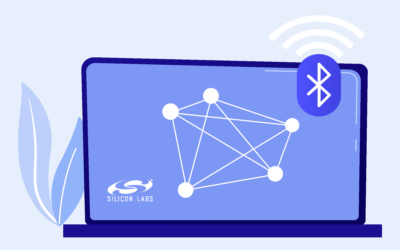
I’m glad Matter Smart Home is moving forward w/ reliable connectivity standard & secure protocols like Matter protocol
I’m thoroughly impressed with this insightful post! The concept of a standardized application layer for IoT connectivity is revolutionary, and I must say, it’s about time we had a reliable solution like Matter Smart Home to alleviate the inefficiencies in IoT development. Kudos to the team behind Matter for tackling this crucial matter in our industry!